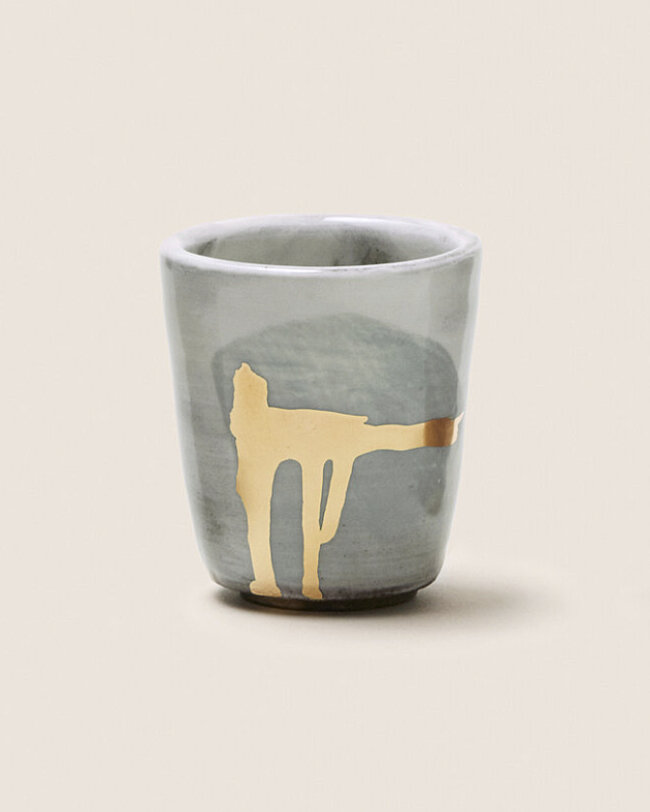Sulawesi - Sa'dan Toraja Woman's Beaded Dance Apron - #185
Description:
Groups of Sa’dan Toraja women wore these beaded sessak or sassang aprons during the ma’gellu dances concluding funeral ceremonies for deceased noblemen. As the dancers moved, the long beaded tassels swayed in time to the music, emphasizing the dancers’ elegant motions.
Among the Sa’dan Toraja, men were beadworkers and women were weavers. This apron required efforts from both genders, with a man plaiting and tasseling the beads, and a women creating the card woven band that tied the apron around a woman’s waist.
This apron mixes old Chinese glass beads produced from ca. 1200 AD with European glass beads produed from ca. 1500. The complete absence of European “white heart” or “cornaline d’Aleppo” beads on this apron is consistent with a date preceding ca. 1825-1830. However, this cannot be confirmed until the threads connecting the beads are subjected to scientific dating methods such as radiocarbon analysis.
The presence of 16 bright orange “mutiraja” beads near the center of the bead-plaited band indicates that this piece was owned by a high-ranking family wealthy enough to afford such costly heirloom beads. These mutiraja beads were made in China or by Chinese beadmakers in Southeast Asia from ca. 1200 AD.
Additional images available upon request.
Provenance:
Anita E. Spertus and Robert J. Holmgren, NY, 1986.
Condition:
Very fine overall, although half of one tassel has gone missing and the card woven band is quite worn in places. While we can supply you with the missing yellow beads for restoring the tassel, the card woven band will likely have to remain as it is.
Dimensions of Beaded Area:
Centimeters: 59 cm x 47 cm (including tassels)
Inches: 23.25” x 19” (including tassels)
Comparable Examples (Coming Soon):
All Photos Copyright Authentic Objects 2024. All Rights Reserved.
Description:
Groups of Sa’dan Toraja women wore these beaded sessak or sassang aprons during the ma’gellu dances concluding funeral ceremonies for deceased noblemen. As the dancers moved, the long beaded tassels swayed in time to the music, emphasizing the dancers’ elegant motions.
Among the Sa’dan Toraja, men were beadworkers and women were weavers. This apron required efforts from both genders, with a man plaiting and tasseling the beads, and a women creating the card woven band that tied the apron around a woman’s waist.
This apron mixes old Chinese glass beads produced from ca. 1200 AD with European glass beads produed from ca. 1500. The complete absence of European “white heart” or “cornaline d’Aleppo” beads on this apron is consistent with a date preceding ca. 1825-1830. However, this cannot be confirmed until the threads connecting the beads are subjected to scientific dating methods such as radiocarbon analysis.
The presence of 16 bright orange “mutiraja” beads near the center of the bead-plaited band indicates that this piece was owned by a high-ranking family wealthy enough to afford such costly heirloom beads. These mutiraja beads were made in China or by Chinese beadmakers in Southeast Asia from ca. 1200 AD.
Additional images available upon request.
Provenance:
Anita E. Spertus and Robert J. Holmgren, NY, 1986.
Condition:
Very fine overall, although half of one tassel has gone missing and the card woven band is quite worn in places. While we can supply you with the missing yellow beads for restoring the tassel, the card woven band will likely have to remain as it is.
Dimensions of Beaded Area:
Centimeters: 59 cm x 47 cm (including tassels)
Inches: 23.25” x 19” (including tassels)
Comparable Examples (Coming Soon):
All Photos Copyright Authentic Objects 2024. All Rights Reserved.
Make it stand out
It all begins with an idea. Maybe you want to launch a business.
Build it
Maybe you want to turn a hobby into something more. Or maybe you have a creative project to share with the world.

